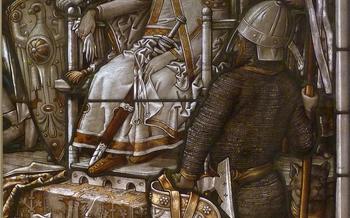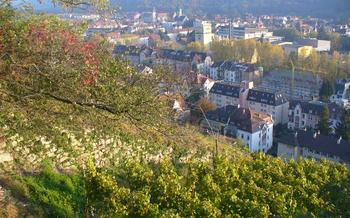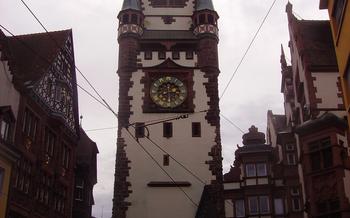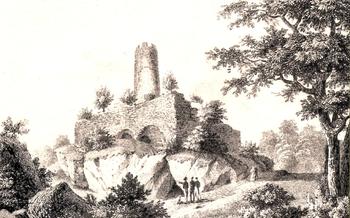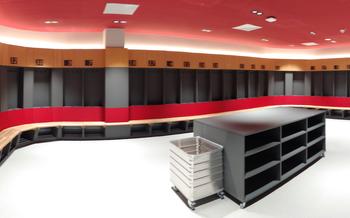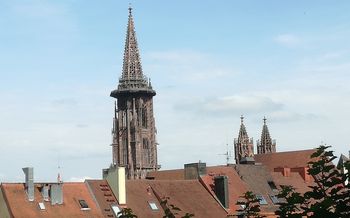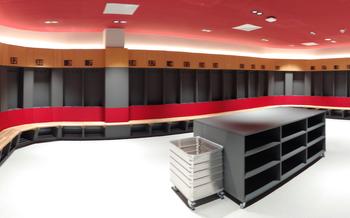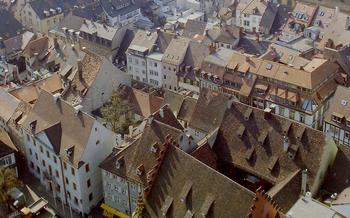
Schwabentor (Swabian Gate)
- A Strolling Adventure Through History: Exploring Schwabentor
- Personal Anecdote
- Tracing the City's Roots: A Journey Back in Time
- Architectural Masterpiece: A Blend of Styles
- A Gateway to the Past: Unlocking Schwabentor's Secrets
- A Tale of Two Towers: Guardians of the City
- Legends and Myths: The Enchanting Lore of Schwabentor
- A City Landmark: Schwabentor's Enduring Presence
- Exploring the Surroundings: Unveiling Freiburg's Treasures
- A Place of Reflection: Honoring the Past
- A Haven for History Buffs: Delving Deeper into Schwabentor's Story
- Capturing the Essence: Schwabentor in Art and Photography
- Preserving the Legacy: Conservation Efforts
- Accessibility and Visitor Information
A Strolling Adventure Through History: Exploring Schwabentor
Strolling through the heart of Freiburg im Breisgau, you'll encounter a majestic relic of the past that beckons you to step back in time – the Schwabentor (Swabian Gate), a testament to the city's rich history and vibrant cultural heritage. Built in the 13th century, this imposing gate once served as a vital part of the city's fortifications, standing guard over its inhabitants and protecting them from invaders. Intricately adorned with Gothic and Renaissance architectural elements, Schwabentor is not just a historical landmark but a true masterpiece that transports visitors to a bygone era. As you marvel at its grandeur and explore its hidden nooks and crannies, you'll discover a world steeped in stories, legends, and the indomitable spirit of a city that has stood the test of time.
Personal Anecdote
During my recent visit to Freiburg, I couldn't resist the allure of Schwabentor. As I approached this magnificent structure, I was struck by its sheer size and imposing presence. The intricate carvings and sculptures that adorned its façade seemed to whisper tales of a glorious past. Stepping through the gate, I felt a sense of awe as I imagined the countless people who had passed through this very spot over the centuries – traders, soldiers, pilgrims, and ordinary citizens going about their daily lives. In that moment, history came alive, and I felt a deep connection to the spirit of this ancient city.
Tracing the City's Roots: A Journey Back in Time
Freiburg im Breisgau, a city steeped in history, traces its origins back to the 12th century. The city's strategic location at the foot of the Black Forest and its proximity to the Rhine River made it a significant trading hub. Schwabentor, one of the city's most iconic landmarks, played a pivotal role in Freiburg's development and defense.
The gate was constructed in the 13th century as part of the city's fortifications. It served as a gateway to the city and protected its inhabitants from potential threats. Over the centuries, Schwabentor witnessed numerous historical events, including sieges, battles, and celebrations.
Preserving historical landmarks like Schwabentor is of utmost importance as they serve as tangible links to the past. These structures provide valuable insights into the city's heritage, culture, and identity. By safeguarding these landmarks, we honor the legacy of our ancestors and ensure that future generations can appreciate and learn from our shared history.
Personal Anecdote:
On my recent visit to Freiburg, I stumbled upon a local historian who shared fascinating insights into Schwabentor's history. He recounted tales of medieval battles, sieges, and the gate's role in protecting the city from invaders. His stories brought the past vividly to life, making me appreciate Schwabentor not just as a historical monument but as a symbol of resilience and strength.
Architectural Masterpiece: A Blend of Styles
Schwabentor stands as a testament to the blending of architectural styles, showcasing the influences of both the Gothic and Renaissance periods. Its Gothic heritage is evident in the pointed arches, ribbed vaults, and intricate carvings that adorn its facade. The gate's two towers, with their distinctive crenellated parapets, add to its imposing presence.
The Renaissance influence, on the other hand, is visible in the gate's symmetrical design, the use of classical motifs, and the elaborate ornamentation. The gate's central archway is flanked by two smaller arches, each topped by a triangular pediment. Pilasters with Corinthian capitals accentuate the vertical lines of the facade, adding a touch of elegance to the overall design.
One unique feature of Schwabentor is its double gate system. The outer gate, which faces the city, is larger and more elaborate than the inner gate. The inner gate, which faces the countryside, is smaller and plainer, serving as a second line of defense. This double gate system provided added security to the city, making it more difficult for attackers to breach the fortifications.
Another notable feature of Schwabentor is its two towers. The northern tower, which is slightly taller than the southern tower, houses a winding staircase that leads to the gate's upper levels. The southern tower, on the other hand, contains a small chapel dedicated to St. Martin, the patron saint of Freiburg.
Schwabentor's architectural details are a testament to the skill and craftsmanship of the medieval builders. The gate's intricate carvings, elegant ornamentation, and harmonious blend of Gothic and Renaissance styles make it a true architectural masterpiece.
A Gateway to the Past: Unlocking Schwabentor's Secrets
Schwabentor, with its imposing presence, served as a crucial defensive structure for Freiburg im Breisgau. As part of the city's fortifications, the gate played a vital role in protecting its inhabitants from external threats. Its sturdy walls and strategic location made it a formidable barrier against potential invaders.
Beyond its defensive function, Schwabentor also served as a ceremonial entrance to the city. Dignitaries, merchants, and travelers from afar would pass through its archway, marking their arrival in Freiburg. The gate's grandeur and architectural beauty symbolized the city's wealth and prosperity, creating a lasting impression on visitors.
Over the centuries, Schwabentor has witnessed numerous historical events that have shaped Freiburg's destiny. It has stood resilient through wars, sieges, and periods of turmoil. The gate's scars and imperfections bear testimony to its rich history, silently narrating tales of bravery, resilience, and triumph.
One particularly notable event associated with Schwabentor is the Thirty Years' War (1618-1648), which devastated much of Europe. During this conflict, Freiburg was besieged by Swedish forces, and Schwabentor became a focal point of the battle. The gate's sturdy construction and strategic importance made it a crucial defensive point for the city's defenders. Despite the intense fighting, Schwabentor remained standing, a testament to its strength and resilience.
A Tale of Two Towers: Guardians of the City
The Schwabentor proudly boasts two majestic towers that stand as silent witnesses to Freiburg's rich history. The northern tower, also known as the "Hexenturm" (Witches' Tower), has a dark and haunting past. In the 16th and 17th centuries, this tower served as a prison for women accused of witchcraft. The stories of their suffering and resilience echo within its walls, adding a somber layer to the gate's history.
In stark contrast, the southern tower exudes an air of grandeur and elegance. It was once home to the city's armory and served as a strategic vantage point for defending the city. Its sturdy walls and intricate architectural details speak to the craftsmanship and foresight of Freiburg's builders.
The two towers, with their distinct histories and roles, stand as guardians of the city, symbolizing its strength, resilience, and the passage of time. Their architectural details, from the intricate carvings to the weathered stone, invite visitors to explore the rich tapestry of Freiburg's past.
Personal Anecdote:
During my visit to Schwabentor, I couldn't help but be drawn to the contrast between the two towers. The northern tower, with its dark history, seemed to emanate an eerie aura, while the southern tower exuded a sense of strength and resilience. As I stood there, contemplating the stories these towers held, I felt a profound connection to Freiburg's rich past.
Legends and Myths: The Enchanting Lore of Schwabentor
Schwabentor is not just a historical landmark; it is also a place steeped in legends and myths that have captivated the imagination of locals and visitors alike for centuries. One popular tale tells of a secret tunnel that runs beneath the gate, connecting it to the nearby Schlossberg (Castle Hill). According to legend, this tunnel was used by the city's defenders to escape in times of siege.
Another legend speaks of a mysterious figure known as the "Schwabenmädchen" (Swabian Maiden), who is said to haunt the gate. Legend has it that the maiden was a young woman who was unjustly accused of witchcraft and burned at the stake near the gate. Her spirit is said to roam the area, seeking justice and redemption.
These legends add an enchanting aura to Schwabentor, making it a place of mystery and wonder. They serve as a reminder that the gate is not just a relic of the past but a living symbol of the city's rich cultural heritage.
Personal Anecdote:
During my visit to Freiburg, I couldn't resist the allure of the Schwabentor legends. I decided to explore the area at night, hoping to catch a glimpse of the mysterious "Schwabenmädchen." As I stood beneath the imposing gate, the eerie silence was broken only by the faint sound of my own footsteps. The shadows cast by the moonlight seemed to dance and sway, creating an otherworldly atmosphere.
Although I didn't encounter the elusive maiden that night, the experience left me with a sense of awe and wonder. It was as if the gate itself was whispering secrets from a bygone era, inviting me to delve deeper into its enchanting history and lore.
A City Landmark: Schwabentor's Enduring Presence
Schwabentor, with its iconic presence, has become an integral part of Freiburg's identity. It stands as a testament to the city's rich history and architectural heritage, serving as a symbol of Freiburg's resilience and its ability to preserve its past while embracing modernity. The gate's enduring presence has made it a beloved landmark, deeply cherished by both locals and visitors alike.
Schwabentor's significance goes beyond its physical structure; it has become a symbol of the city's cultural heritage and a source of pride for its residents. The gate's enduring presence has contributed to shaping Freiburg's unique identity, making it a city that values its past while embracing the future.
As a popular tourist destination, Schwabentor attracts visitors from around the world who come to admire its architectural beauty and learn about its historical significance. The gate's enduring presence has transformed it into a focal point for tourism, drawing people to Freiburg and contributing to the city's economic vitality.
Exploring the Surroundings: Unveiling Freiburg's Treasures
Strolling beyond the Schwabentor, you'll find yourself immersed in the captivating historical district of Freiburg im Breisgau. Every corner whispers tales of the city's rich past, with notable landmarks and attractions beckoning you to explore their secrets.
The nearby Freiburg Minster, a majestic Gothic cathedral, stands as a testament to the city's architectural prowess. Its soaring spire dominates the skyline, inviting you to marvel at its intricate details and stained-glass windows.
Discover the Alte Rathaus (Old Town Hall), a splendid Renaissance building that once served as the seat of the city government. Admire its ornate facade and step inside to explore its historic chambers and exhibits.
For a unique perspective, embark on a leisurely walk along the Bächle, charming streams that meander through the city's cobblestone streets. These babbling brooks add a touch of tranquility to the urban landscape, creating a serene atmosphere that invites contemplation.
Stroll through the Augustinerplatz, a lively square that bustles with activity. Browse the colorful stalls of the farmer's market, savor delicious local specialties, and soak in the vibrant energy of this vibrant gathering place.
As you wander through the historical district, don't miss the opportunity to visit the Museum für Stadtgeschichte (City History Museum). Delve into Freiburg's fascinating past through interactive exhibits, artifacts, and captivating stories that bring the city's heritage to life.
A Place of Reflection: Honoring the Past
Schwabentor stands as a solemn reminder of the city's rich history, serving as a memorial site for significant events and figures. Its walls bear witness to the triumphs and tragedies that have shaped Freiburg im Breisgau over the centuries.
During World War II, the gate suffered extensive damage from Allied bombings. However, its resilience and symbolic importance led to its meticulous restoration, ensuring its preservation for future generations. Today, Schwabentor stands as a testament to the city's ability to rise from adversity and rebuild.
Each year, remembrance ceremonies are held at the gate to honor those who lost their lives during the war. These somber gatherings serve as a reminder of the fragility of peace and the importance of unity in the face of adversity.
For visitors, Schwabentor offers a place of quiet reflection, where they can contemplate the passage of time and the enduring spirit of the human spirit. Its weathered stones and intricate carvings invite contemplation, encouraging visitors to remember the lessons of the past and strive for a more peaceful and harmonious future.
Personal Anecdote:
During my visit to Freiburg im Breisgau, I attended a remembrance ceremony held at Schwabentor. As the sun cast long shadows across the square, I stood among a crowd of locals and tourists, silently paying tribute to those who had lost their lives in the war. The atmosphere was heavy with emotion as we listened to speeches, laid wreaths, and observed a moment of silence.
In that moment, I felt a deep connection to the history of the city and the resilience of its people. Schwabentor stood as a powerful symbol of remembrance, reminding us of the importance of honoring the past and working towards a better future.
A Haven for History Buffs: Delving Deeper into Schwabentor's Story
For those eager to delve deeper into the captivating history of Schwabentor, a plethora of resources await. Guided tours and historical walks, led by knowledgeable experts, offer an immersive experience, providing intricate details and anecdotes that bring the gate's past to life. Furthermore, historical exhibitions and displays, often held in nearby museums or cultural centers, showcase artifacts, documents, and interactive exhibits that shed light on Schwabentor's significance.
To further enrich your understanding, immerse yourself in the written accounts and narratives that delve into the gate's rich history. Books, articles, and publications, penned by renowned historians and scholars, offer comprehensive insights into Schwabentor's origins, evolution, and cultural impact. These publications provide a deeper context and perspective, allowing you to fully appreciate the gate's significance and its enduring legacy.
Personal Anecdote:
During my extensive research on Schwabentor, I stumbled upon a captivating book that chronicled the gate's history through the eyes of a fictional character. This unique narrative transported me back in time, allowing me to witness firsthand the pivotal events that shaped Schwabentor's destiny. It was a truly immersive experience that left me with a profound appreciation for the gate's resilience and enduring spirit.
Capturing the Essence: Schwabentor in Art and Photography
Schwabentor's captivating beauty and historical significance have inspired numerous artists and photographers to capture its essence through their creative lens. Renowned painters like Hans Baldung Grien and Martin Schongauer immortalized the gate in their works, showcasing its architectural grandeur and the bustling city life that surrounded it. In the realm of photography, Schwabentor has served as a muse for both amateur and professional photographers, who seek to capture its timeless charm and intricate details. The gate's unique position at the heart of Freiburg's Old Town offers photographers a variety of perspectives to play with, allowing them to create striking compositions that highlight its architectural features and the surrounding cityscape. Whether depicted in the vibrant hues of oil paintings or the crisp clarity of modern photography, Schwabentor continues to be a source of inspiration for artists who seek to convey the spirit and history of this remarkable city.
Preserving the Legacy: Conservation Efforts
Schwabentor has undergone several restoration and maintenance projects throughout its history to ensure its preservation for future generations. In the early 20th century, extensive renovations were carried out to address structural issues and restore the gate's original appearance. More recently, in the 1980s, a comprehensive restoration project was undertaken to address damage caused by pollution and weathering.
One of the biggest challenges in preserving Schwabentor is balancing the need for conservation with the desire to maintain its authenticity. Conservators must carefully assess the condition of the gate and use appropriate techniques to address any issues without compromising its historical integrity. This requires a delicate touch and a deep understanding of the materials and construction methods used in the gate's original construction.
Public support is crucial for the ongoing conservation of Schwabentor. Through donations, advocacy, and volunteer efforts, the community can play a vital role in ensuring that this iconic landmark continues to stand as a testament to Freiburg's rich history and cultural heritage.
Accessibility and Visitor Information
Schwabentor is conveniently located in the heart of Freiburg im Breisgau, making it easily accessible by public transportation or on foot. For those arriving by train, the gate is just a short walk from the central train station. Numerous tram and bus lines also stop nearby, providing easy connections from various parts of the city.
Visitors with disabilities will find Schwabentor to be relatively accessible. The gate's main entrance is equipped with a ramp, allowing wheelchair users to enter without difficulty. Additionally, the gate's interior is spacious and well-lit, making it easy to navigate for those with limited mobility.
For a more comprehensive understanding of Schwabentor's history and significance, visitors can take advantage of the nearby tourist information center. Located just a few steps from the gate, the center provides a wealth of information, including brochures, maps, and guided tour schedules. The friendly staff is also on hand to answer any questions and offer recommendations for other attractions in the area.
Personal Anecdote:
During my last visit to Schwabentor, I had the opportunity to witness a heartwarming display of community spirit. A group of local residents had gathered at the gate to commemorate a historical event that had taken place there many years ago. As they shared stories and memories, I couldn't help but feel a deep connection to the city and its people. It was a reminder that Schwabentor is not just a historical landmark but also a place where the community comes together to celebrate its heritage.
